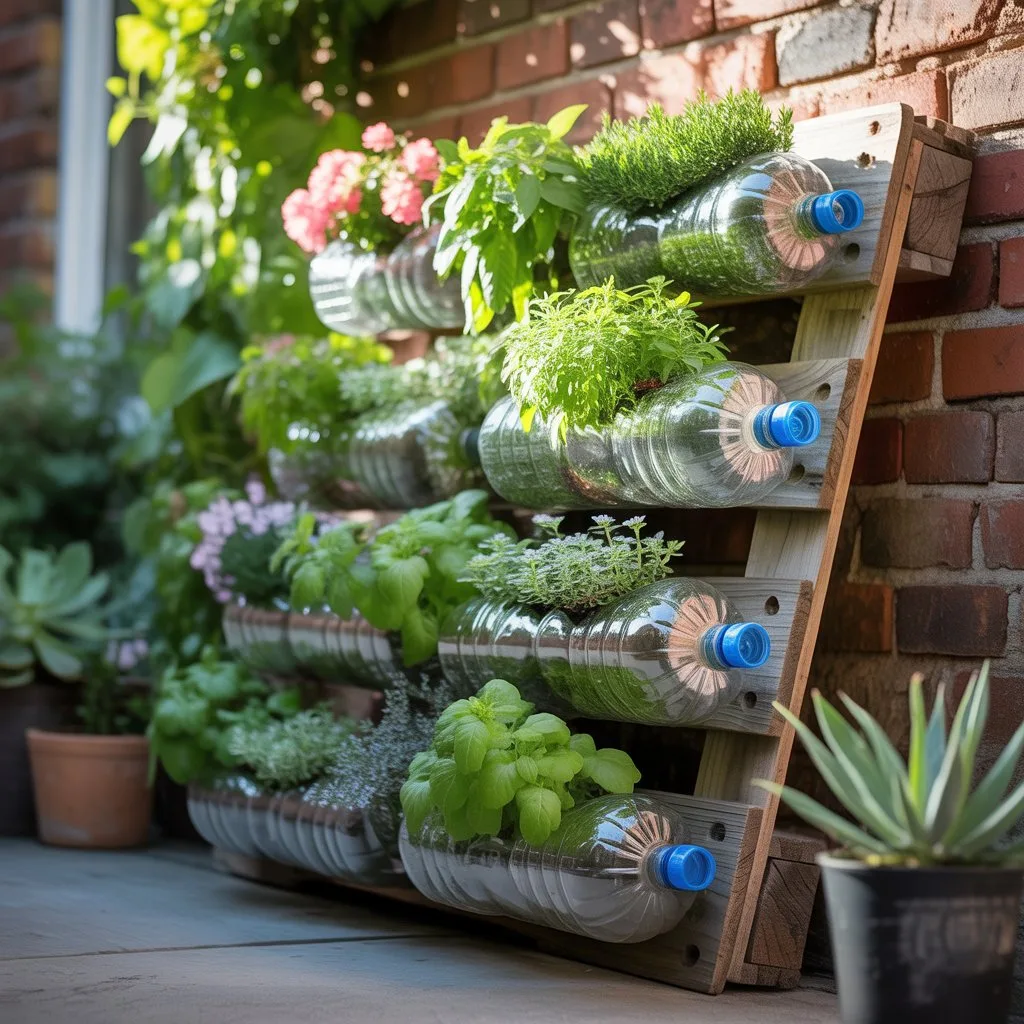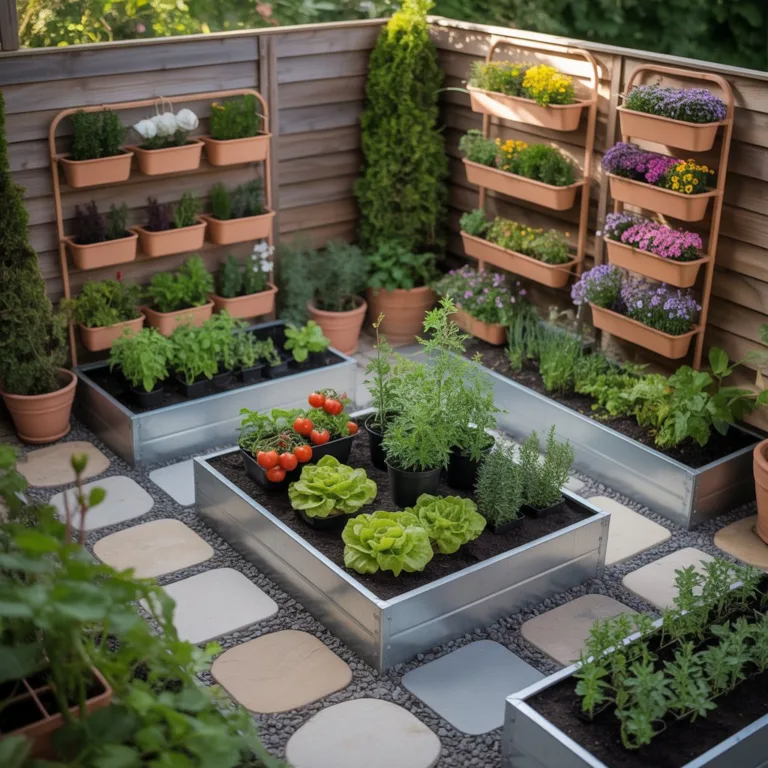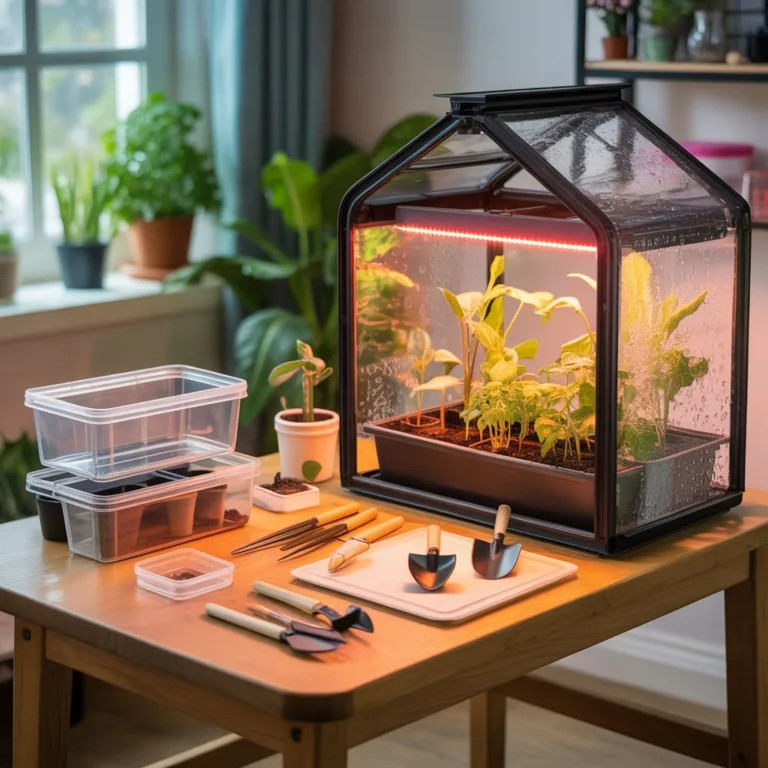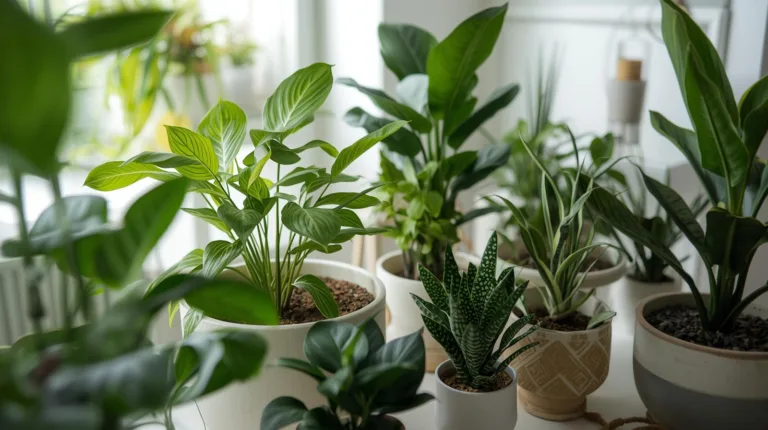Creating a vertical garden using recycled plastic bottles is an innovative and eco-friendly way to transform small spaces into lush, green areas. Urban living often comes with limited outdoor space, but vertical gardens provide a solution that allows anyone to enjoy fresh herbs, vegetables, or decorative plants without a traditional garden. By repurposing plastic bottles, you not only reduce waste but also create a visually appealing and functional piece for your home or balcony.

This guide explores how to design and build a DIY vertical garden using plastic bottles, tips for plant selection, maintenance strategies, and creative ideas to make your green space thrive. From the types of bottles suitable for planting to watering systems and aesthetic arrangements, you’ll find everything needed to start your sustainable vertical garden.
Benefits of Vertical Gardens Using Recycled Bottles
Vertical gardens are more than just a creative trend—they offer multiple practical benefits:
Space Optimization
Vertical structures allow gardening in tight spaces such as balconies, patios, or indoor walls. Instead of spreading plants horizontally, you stack them vertically, maximizing limited space efficiently.
Waste Reduction
Reusing plastic bottles for gardening reduces environmental waste. Each bottle that becomes a planter prevents potential pollution and promotes sustainable living practices.
Accessibility and Convenience
Vertical gardens can be installed at eye level or within easy reach, simplifying planting, watering, and harvesting. This makes gardening accessible for children, elderly people, or anyone with mobility limitations.
Enhanced Aesthetic Appeal
Vertical gardens can serve as living walls that beautify spaces. The combination of greenery and colorful flowers creates a natural artwork, softening the visual impact of concrete walls or urban surroundings.
Choosing the Right Bottles and Materials
Not all plastic bottles are equally suitable for vertical gardening. Selecting the right size, shape, and durability is essential.
Bottle Selection
- Water bottles: Ideal for small plants, herbs, or succulents.
- Soda bottles: Offer a wider opening for larger root systems.
- Juice or detergent bottles: These can be repurposed for taller plants, ensuring sufficient depth.
Ensure all bottles are thoroughly cleaned and rinsed to remove any residues that could harm plants.
Additional Materials
- Strong string, wire, or rope for hanging bottles vertically.
- Drill or sharp knife for creating drainage holes.
- Potting soil suited for indoor or outdoor plants.
- Optional paint or decorative materials to personalize bottles.
Preparing Plastic Bottles for Planting
Before adding soil and plants, bottles need to be prepared for functionality and drainage.
- Cutting and Opening: Depending on your design, cut a side opening for planting while leaving enough structure for stability.
- Drainage Holes: Poke small holes in the bottom to prevent waterlogging, which can harm roots.
- Hanging Mechanism: Use strong wire or rope to create loops for hanging bottles vertically. Ensure the attachment is secure enough to hold the weight of soil and plants.
Proper preparation ensures that plants have sufficient space for growth while maintaining the overall stability of the vertical garden.
Selecting Plants for Vertical Bottle Gardens
Plant choice is crucial for a thriving vertical garden. Consider plant size, growth rate, and light requirements.
Herbs
- Basil, parsley, mint, and thyme grow well in shallow bottles and require minimal space.
- Herbs are perfect for kitchen balconies, allowing for easy access during cooking.
Vegetables
- Lettuce, spinach, and small peppers thrive in vertical gardens.
- Choose compact or dwarf varieties to prevent overcrowding.
Flowers
- Petunias, marigolds, and nasturtiums add color and can attract pollinators if placed outdoors.
- Choose trailing or cascading flowers for a more visually appealing arrangement.
Succulents and Cacti
- Ideal for minimal maintenance and indoor vertical gardens.
- Require less water, making them suitable for dry indoor conditions.
Arranging Bottles in a Vertical System
There are multiple ways to set up your vertical garden using plastic bottles.
Wall-Mounted Vertical Garden
- Attach bottles to a wall using hooks, nails, or a wooden frame.
- Arrange in a staggered or grid pattern to optimize light exposure and aesthetic balance.
Freestanding Vertical Tower
- Use a sturdy wooden or metal frame to hang bottles vertically.
- Can be rotated or moved to follow sunlight throughout the day.
Tiered Hanging Garden
- Suspend bottles from horizontal rods or ropes.
- Multiple levels allow stacking plants without blocking sunlight for lower tiers.
Each arrangement can be customized to available space, sunlight, and the types of plants chosen.
Planting Techniques for Bottle Gardens
Proper planting techniques ensure healthy growth and ease of maintenance.
- Fill each bottle with a mix of potting soil and organic compost.
- Gently remove plants from their original containers to avoid root damage.
- Place each plant in the prepared opening, covering roots fully with soil.
- Water lightly after planting, ensuring water drains properly.
Adding mulch or small pebbles on top of soil can help retain moisture and prevent soil spillage when watering.
Watering and Maintenance
Regular maintenance is essential for vertical bottle gardens due to limited soil volume in each planter.
Watering Techniques
- Monitor soil moisture and water when the top layer feels dry.
- For indoor gardens, avoid overwatering, as drainage is limited.
- Consider drip irrigation or using a recycled bottle as a water reservoir for self-watering setups.
Fertilization
- Use natural liquid fertilizers such as diluted compost tea or fish emulsion for gentle feeding.
- Apply every few weeks during active growth, depending on plant type.
Pruning and Harvesting
- Regularly prune herbs and flowering plants to encourage bushy growth.
- Harvest vegetables as soon as they mature to prevent overcrowding and maintain plant health.
Creative Ideas for Customizing Bottle Gardens
Vertical gardens can be both functional and artistic.
- Colorful Bottles: Paint bottles with non-toxic paint to add visual interest.
- Themed Gardens: Create herb towers, salad gardens, or floral cascades.
- Decorative Additions: Add small stones, shells, or wooden markers for an aesthetic touch.
- Interactive Design: Encourage children to plant and decorate their own bottles to teach sustainability and creativity.
Environmental and Educational Benefits
Vertical bottle gardens are not only practical—they teach valuable lessons about sustainability and resourcefulness.
- Reduces plastic waste by giving bottles a second life.
- Encourages composting and organic gardening.
- Provides educational opportunities for children to learn about plant growth, photosynthesis, and environmental stewardship.
- Promotes self-sufficiency by growing herbs and vegetables at home.
Creating a vertical garden using recycled plastic bottles combines creativity, sustainability, and functionality. By carefully selecting bottles, plants, and arrangements, anyone can transform small spaces into thriving green areas. Regular watering, appropriate fertilization, and occasional pruning ensure that your vertical garden remains healthy and productive.
Engaging with this type of gardening provides not only fresh produce and beautiful greenery but also a sense of accomplishment and environmental responsibility. Start gathering bottles and planning your layout today, and watch as your vertical garden grows into a vibrant, eco-friendly centerpiece for your home or balcony.

Sofia Greenfield is a sustainable gardening expert and environmental educator who inspires families and urban gardeners to cultivate green spaces responsibly. She shares practical tips on growing vegetables, herbs, and flowers using eco-friendly and recycled materials, emphasizing the joy of gardening while protecting the planet.



